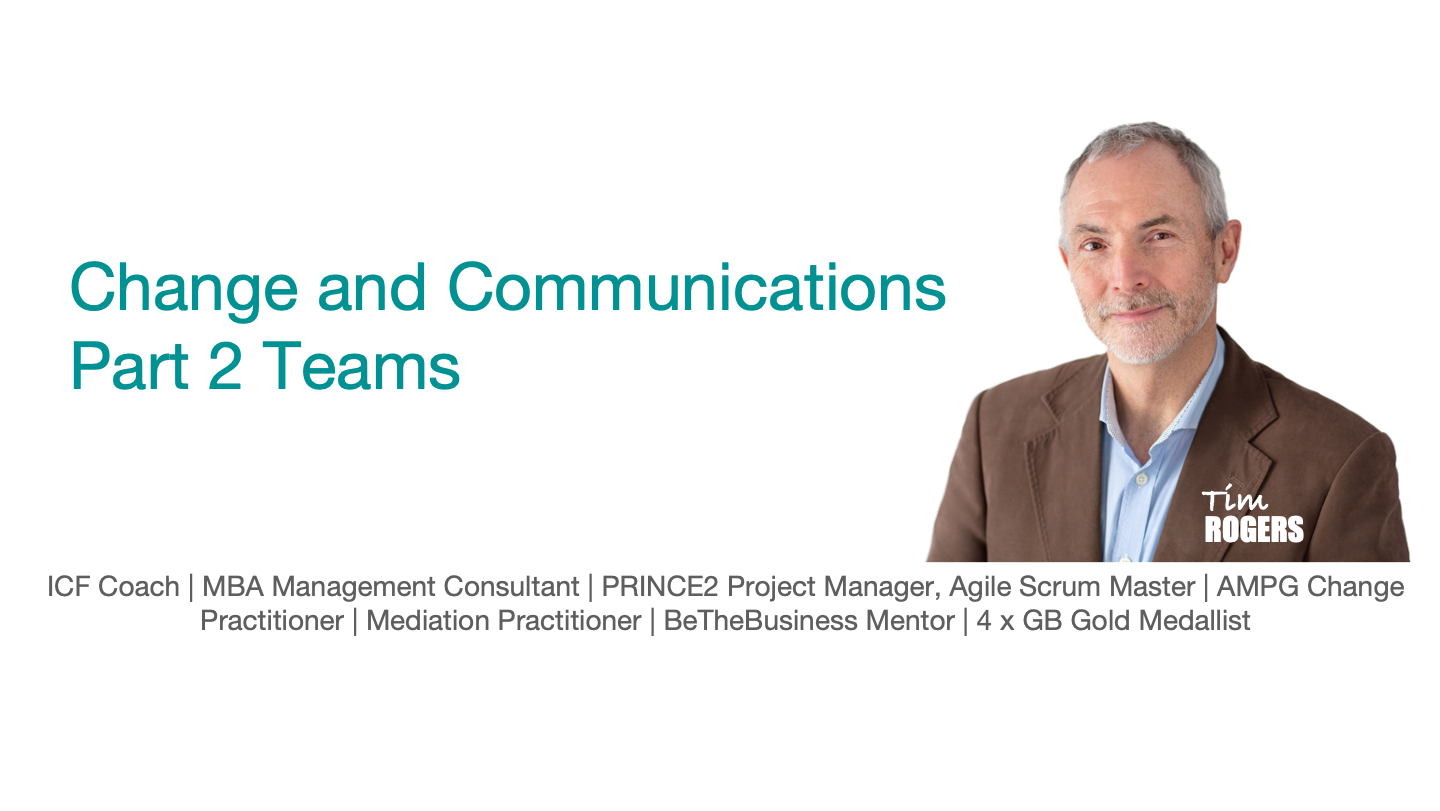
This is part two of a three-part series that examines change and communication models, starting with a macro perspective of the organization as a whole, then narrowing down to teams and individuals. Subsequently, it looks across other aspects such as leadership and psychological safety, exploring how these elements impact organizations, teams, and individuals. In reality, this forms a complex jigsaw of interrelationships. Therefore, it is not the case that one model holds universal truth. Instead, we must consider how all these different factors interact within what is truly a complex, adaptive system of change.
The next series of models focus less on diagnosing or prescribing a model for the entire organizational change process. Instead, they aim to deepen our understanding of the change experience from the perspectives of the participants, beginning with an examination of teams and communications, and delving into the human interactions and emotions involved in the change process.
The Hero’s Journey
Although seldom used in change management, and more common in psychology and philosophy, Joseph Campbell’s concepts of archetypes and The Hero’s Journey, as outlined in “The Hero with a Thousand Faces,” are profoundly relevant. In any change program, it’s essentially about stories—my story, your story, and the organization’s story, and how our roles interconnect. Understanding the human narrative and how we perceive the world in terms of stories—whether as hero, victim, villain, opportunity, or loss—is crucial. Recognizing the power of storytelling, both personal and corporate, and how these narratives intertwine, plays a significant role in navigating change.
SCARF Model
The SCARF model, which stands for Status, Certainty, Autonomy, Relatedness, and Fairness, is also critical. Our status and sense of belonging profoundly influence our experience during the change narrative. Feeling included in the team as a valued member or feeling rejected and marginalized can significantly affect our participation, support, adaptation, and adoption of change.
Peter Hawkins’ 4Cs
Peter Hawkins’ work on the 4Cs of teams—commissioning, connecting, co-creating, and clarifying—is vital in understanding how teams operate within organizations, which are essentially composites of various social groups. It’s essential to comprehend how these groups function internally and how different teams, such as sales, marketing, technology, compliance, and the board, collaborate to achieve aligned goals and deliver change effectively.
Five Dysfunctions of a Team
Recognizing “The Five Dysfunctions of a Team” model is incredibly useful for identifying what can undermine team cohesion and productivity. Issues like ego conflicts, low standards, ambiguity, lack of harmony, or unresolved conflicts can severely impact a team’s success and should be addressed to navigate the change process effectively.
Thinking Environment
Nancy Kline’s work on the Ten Components of a Thinking Environment is crucial for fostering effective communication. It emphasizes the importance of recognizing diversity, inclusion, equity, and fairness, and providing a forum for listening and valuing people’s contributions. This approach is fundamental to enhancing individuals’ sense of worth and their collaborative and supportive engagement in change.
Psychological Safety
Models for psychological safety are essential for effective change management and communication. Creating an environment where people feel safe to express concerns, reflect, and voice dissent is crucial. Without psychological safety, emotions may turn into resistance, anger, or subversion. Establishing a psychologically safe environment is a precondition for successful change, allowing individuals to explore different or improved ways of adapting to change while reducing anxiety and fostering collaboration and commitment.
By understanding these models, we can create a more supportive and effective framework for managing organizational change, ensuring that all participants are equipped to engage positively and productively in the transformation process.
Tim HJ Rogers
Consult | CoCreate | Deliver
I support people and teams to grow, perform and succeed unlocking potential as a partner Consultant, Coach, Project and Change Manager. Together we can deliver projects and change, and improve the confidence, capacity, drive and desire of the people I work with.
ICF Trained Coach | MBA Management Consultant | PRINCE2 Project Manager, Agile Scrum Master | AMPG Change Practitioner | Mediation Practitioner | BeTheBusiness Mentor | 4 x GB Gold Medalist | First Aid for Mental Health | Certificate in Applied Therapeutic Skills
#people #process #performance #projects #programmes #pmo #change #processimprovement #projectmanagement #changemanagement #workshops #mediation #coach #icfcoach #mentor #facilitation #training #jersey #channelislands
